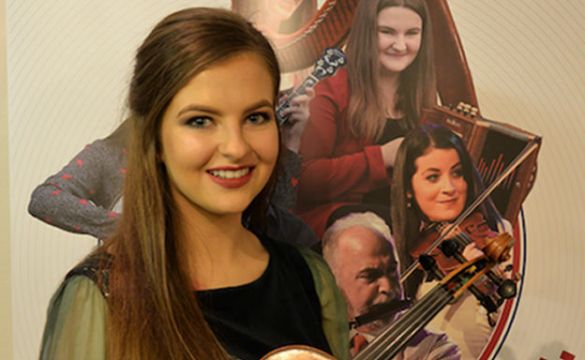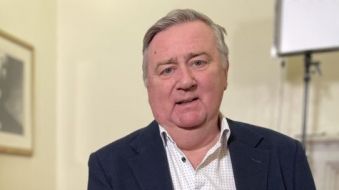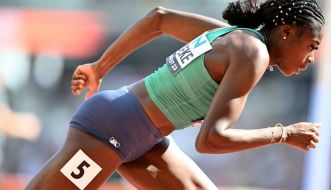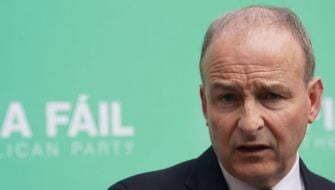The jury in the trial of the man accused of murdering school teacher Ashling Murphy has begun its deliberations at the Central Criminal Court.
Ms Murphy (23) was killed while exercising on a canal path in Tullamore, Co Offaly, on the afternoon of January 12th, 2022.
Jozef Puska (33), of Lynally Grove in Mucklagh, Tullamore, has pleaded not guilty to her murder.
Mr Justice Tony Hunt told the nine men and three women of the jury: “You have to be clear-eyed and unemotional in your task.”
He told the jury they have to be clinical, analytical and forensic in their approach.
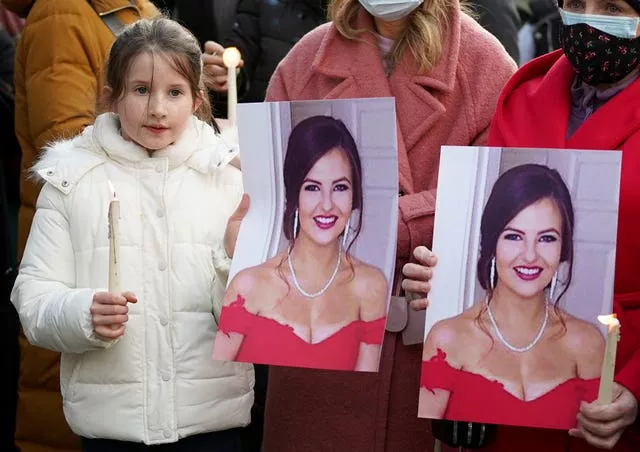
“You certainly leave emotion out as a jury, I can’t emphasise that enough,” he added.
The accused, who gave evidence from the witness box last week, has claimed he was “trying to help” Ms Murphy after she had allegedly been attacked by another man, who he said had also attacked and stabbed him.
Mr Justice Hunt told the jury that if they are satisfied with the facts as described by Mr Puska or believe there is a reasonable possibility of them being as he said, they are to acquit as no crime had been committed by him.
He said that, in that event, Mr Puska is a victim of crime and of circumstance.
He added that if they think he was a misunderstood good Samaritan in this case, they are to acquit.
In examining Mr Puska’s direct evidence, he said the jury may have to test for unhappy coincidence in examining the evidence.
“Mr Puska certainly didn’t help himself by some of his behaviour in the aftermath.”
He said, however, if they were satisfied that what he said “simply doesn’t stand up” to the extent of what is reasonably possible and that the prosecution had “shot it down”, they must consider what that means.
Mr Justice Hunt told the jury if they are to convict Mr Puska of murder they must be satisfied beyond reasonable doubt that he inflicted the neck wounds on Ms Murphy and that he intended to kill or cause serious injury at the time.
The judge also raised the “academic possibility” that they may return a verdict of manslaughter but said nobody in the case is arguing for that.
In his charge, Mr Justice Hunt took the jury through key parts of the evidence in the case.
He said they face a “stark choice” between accepting the prosecution case against Mr Puska or accepting his defence.
The prosecution insists the evidence against Mr Puska is “overwhelming” and “compelling”, and claim he has “spun” a story of “foul and contemptible” lies for the sake of the jury.

Focusing on legal principles involved in the case on Tuesday, on Wednesday he took the jurors through the main aspects of the evidence.
These covered an alleged confession Mr Puska gave to gardaí in a Dublin hospital; DNA evidence found under Ms Murphy’s fingernails; inferences jurors are permitted to draw from Mr Puska’s failure to answer certain questions when interviewed by gardaí; lies he has admitted telling to gardaí; and evidence given by eyewitnesses on the day of the attack in Tullamore.
The judge urged jurors to decide on the facts of the case first, and then apply the law to those facts.
He said what was most important was their assessment of the evidence, not what he or the various lawyers thought.
Mr Puska, wearing a grey jacket and white shirt, watched on from the dock while members of Ms Murphy’s family sat in the public gallery of the court.
Referring to Mr Puska’s comments to gardaí in hospital, in which he allegedly confessed to the murder, the judge told jurors it was their role to assess whether this could be relied upon.
“It’s a matter for you to be satisfied that words of admission were spoken,” he said.
Admission
He said the Garda had received some criticism regarding how the alleged admission was obtained.
He said there was no prohibition on gardaí carrying out investigations on hospital premises, but he said the fact they did not seek a doctor to assess whether Puska was fit to talk to them may be an issue they want to consider.
He said there was a suggestion that gardaí had “sidestepped” doctors and nurses to access Mr Puska, but he told jurors to consider the context in which the gardaí were operating, namely the fear there was a “maniac on the loose” following Ms Murphy’s murder.
He said jurors may wish to consider that the Slovakian national had undergone an exploratory procedure in hospital, was in pain and was in unfamiliar surroundings when he made the alleged admission through an interpreter. He also noted that people have wrongly confessed to things before.
But the judge also suggested it was not always the case that gardaí spoke to people when they were in “pristine condition”.
“You assess what the guards did and the circumstances in which they did it,” he told the jury.
DNA
On the DNA evidence, the judge interpreted the scientific evidence linking the profile found under Ms Murphy’s fingerprints to MR Puska, saying it was “north of 99 per cent certain that it’s his DNA compared to anybody else’s”.
But he said it was the “prosecutors’ fallacy” that a high likelihood of a DNA match automatically meant a high likelihood of guilt.
He said both the prosecution and defence version of events involved there being physical contact between Mr Puska and Ms Murphy.
He said the question jurors need to consider was whether that contact was through a fatal assault or by the accused coming to Ms Murphy’s aid after she was attacked by someone else.
Mr Justice Hunt also told the jurors they were able to draw negative inferences from Mr Puska’s failure to answer some questions in garda interviews. These include questions asking him to account for his DNA and his bike being found at the scene.
He said any inferences drawn could not be used on their own to sustain a guilty verdict, but they could be used to corroborate or support other evidence against the accused.
The judge said the jury could also draw a negative inference from the fact Mr Puska made no comment when told about the consequences of failing to mention anything that he might later rely on in his defence.
The judge said jurors had to decide whether there was a “benign” reason for his failure to answer questions or offer further material or whether it inferred guilt.
Jurors were also taken through the out-of-court lies attributed to Mr Puska.
The judge said the accused has conceded he lied to gardaí on “some things”, including an initial claim that he had sustained stomach wounds after being randomly attacked by two men in the Blanchardstown area of Dublin.
Mr Justice Hunt said jurors needed to consider the “full panoply” of reasons someone might lie and said it could have been for an “innocent reason”.
“If you think there’s an innocent explanation for the lies then you take no notice of the lie,” he said.
Eyewitnesses
The judge then turned to eyewitness evidence.
He placed particular focus on testimony provided by primary school teacher Jenna Stack who was jogging with a friend on the Grand Canal in Tullamore when she came across a man crouching over a struggling women in a ditch.
The judge read the entire testimony back to the jurors and noted that Ms Stack had ultimately identified another man as the potential attacker.
The judge said errors were often made with identification in criminal cases and said it was up to the jury to decide whether that mistake “cast a reasonable doubt on the rest of the evidence” given by the witness.
Mr Justice Hunt said the court heard Mr Puska say that his primary motivation when returning to Mucklagh after the alleged attack was the safety of his family.
The judge said a tangible thing that can be said is that his clothes were burnt.
He told the jury: “How that contributes to anyone’s safety is a matter for you.”
Mr Justice Hunt told the jury they can benchmark statements by Mr Puska and witnesses in the case against CCTV evidence.
He said they may consider the way Mr Puska walked in the CCTV footage after the alleged attack.
Mr Justice Hunt discussed the prosecution and defence’s explanation for Mr Puska shaving his beard.
He said the prosecution said the defendant did this as a “deflection” while Mr Puska said he did this to find out if there were cuts under his beard.
The judge told the jury to “analyse that explanation very closely”.
He questioned if a beard needed to be cut off if there were cuts that bleed or if it would be apparent some other way.
“Stress test everything in the case by reference to the evidence that you have. It applies across the board, that’s all I’m saying here. Look at it very carefully indeed.”
The judge went on to read parts of Mr Puska’s direct evidence to the jury.
Mr Justice Hunt also clarified an earlier remark by stating that nobody in the case was suggesting there was any prior connection between Mr Puska and Ms Murphy.
The jury, which began deliberating at 3.35pm, were sent home by Mr Justice Hunt at 4pm to resume deliberations on Thursday morning.
He said he would have further directions in the morning.
Upon their request, he told them they would be provided of transcripts of Mr Puska’s evidence, as well as that of Ms Stack and Aoife Marron.
